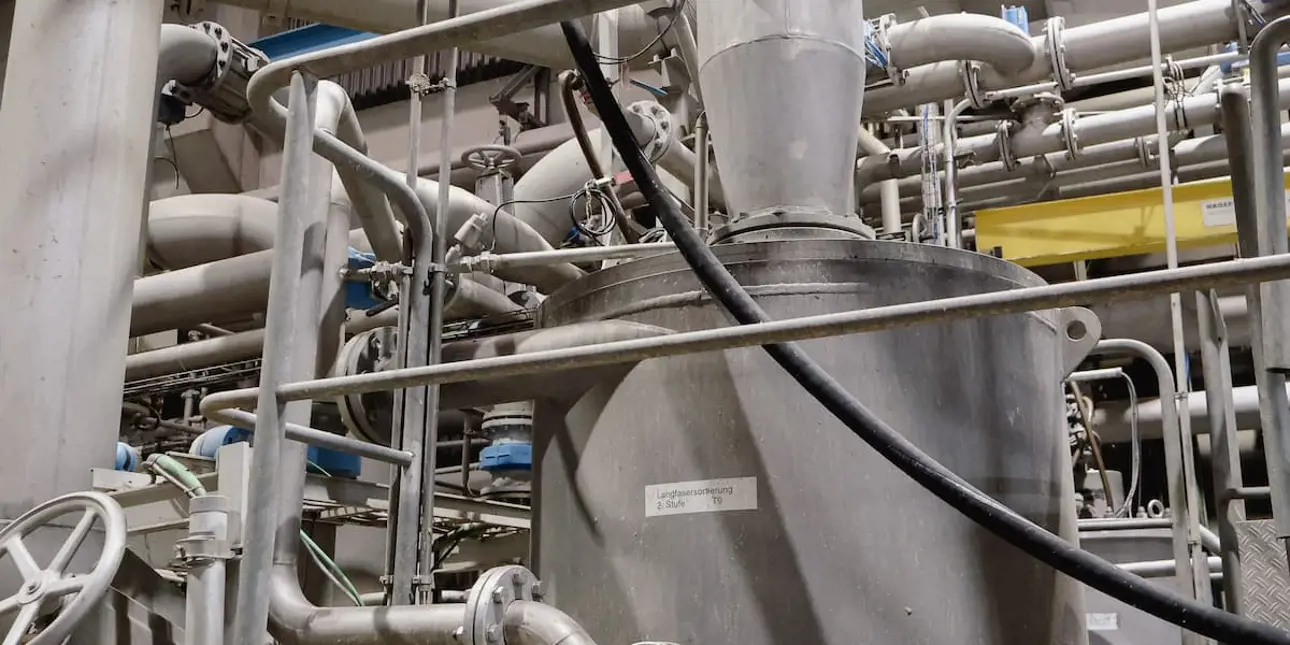DS Smith Aschaffenburg optimizes screening efficiency with Valmet
With roots dating back to 1872, DS Smith’s Aschaffenburg paper mill in Germany is one of Europe’s oldest and most respected paper production sites. Known for its strong focus on sustainability and quality, the mill produces lightweight corrugated base paper made entirely from recycled materials. In its continued journey of optimization, the mill recently partnered with Valmet to further enhance screening performance in its recycled fiber line—successfully reducing fiber losses and improving screening runnability.

Screening, a key stage in recycled fiber processing
Screening plays a critical role in recycled fiber lines by separating unwanted materials from usable fibers, ensuring clean pulp for paper production. In a modern OCC (Old Corrugated Containers) line, efficient screening is essential not only for product quality, but also for minimizing fiber loss and optimizing overall resource usage.
For DS Smith Aschaffenburg, improving the last stage of screening was a strategic step in their long-term fiber recovery initiative.
Reducing fiber losses
The latest screening upgrade was part of a broader fiber recovery initiative at the mill. Over time, DS Smith has already implemented several process optimizations to reduce fiber losses. The key objective of this project was to decrease the thickening factor of the LF fine screen to reach lower fibers in the reject and enhance the runnability without compromising the quality.
Over the past years, we’ve worked hard to push fiber recovery to its limits. The screen improvement project with Valmet was the next logical step, says Wolfram Gerspach, Senior Capex Technology Manager, DS Smith Paper.
Valmet, the original supplier of the screening equipment, was the clear choice for the mill. Their deep understanding of the machines and their consistent on-site service made them a trusted partner for this operation.
Valmet’s dilution belt upgrade
At the heart of the upgrade was the installation of a Valmet dilution belt, which optimizes consistency inside the screen without the need for complex mechanical changes or major reconstruction. It helps the screen run closer to the ideal operating point, resulting in a higher accept consistency, lower fiber losses, and improved overall runnability.
This solution introduces dilution water directly to the middle of the screen by using a specially designed perforated belt in the middle of the screen basket. By distributing the dilution water into the middle of the screen, the stock gets diluted homogenously, the dilution belt effectively reduces the thickening factor and improves accept consistency.
This method enhances screening performance without compromising on fiber recovery and pulp quality. The improved dilution flow also supports more stable operation and better runnability in subsequent process stages.
The dilution belt was a smart solution from Valmet. It allowed us to reduce thickening without increasing water usage significantly, and it integrated well with our existing setup, says Gerspach.
On-site modification
The upgrade involved adding two dilution connections to the existing screen body. “This type of screen body modification is usually done at Valmet’s workshop, but we managed to complete it during a regular shutdown at the mill,” explains Outi Kukkamäki, Valmet’s Sales Manager. “Thanks to seamless cooperation with DS Smith’s team and the local welding company, we were able to execute the installation efficiently and cost-effectively.”
The most critical part of the installation was to modify the existing screen body with two new dilution water connections. In the workshop environment this is not an issue but such precise work in the mill site during the normal shutdown can be challenging. “It was a team effort through and through,” Kukkamäki adds.
Tangible improvements in performance
Post-installation, DS Smith observed positive changes after a short period of fine-tuning. “We’ve seen a noticeable drop in the thickening factor, which was our main goal. The screen now accepts more fiber and performs more smoothly than before,” notes Gerspach.
He continues: “Valmet’s solution has brought us closer to our fiber recovery targets. Their proposal to optimize dilution around the screen has clearly paid off.”
Text: Miia Kaisanlahti
Follow us on valmet.com | Twitter | Twitter (IR) | LinkedIn | Facebook | YouTube | Instagram
Related products
Valmet’s solution has brought us closer to our fiber recovery targets. Their proposal to optimize dilution around the screen has clearly paid off.


